Where to Look On The Race Track
It is impossible to go to any type of track day event around the world without hearing drivers speak about where they are looking while on the track. “Eyes Up” is probably the most used phrase among the high-performance driver education (HPDE) instructor community.
The ability for a racer to see more, sooner, and process the track faster can separate great drivers from good drivers. To help develop your vision and to understand where you should look on the track, all you need is practice!
How do we know if our eyes are actually up? Where exactly should race car drivers be looking on the race track? In this video and this blog, Blayze pro racing coaches break down exactly where we want our eyes to focus. One of the tactics we use here at Blayze is not to simply tell you what to do, but to use real-life examples to explain various concepts.
We will feature Sebring International Raceway’s Turn 3 in this blog to show exactly where we want to look. Sebring International Raceway hosts the legendary Mobil 1 Twelve Hours of Sebring and is one of America’s most active racing facilities. The track holds more than 175 events year-round with more than 400,000 drivers, crew members, engineers, and racing families in attendance.
Vision When Approaching the Brake Zone
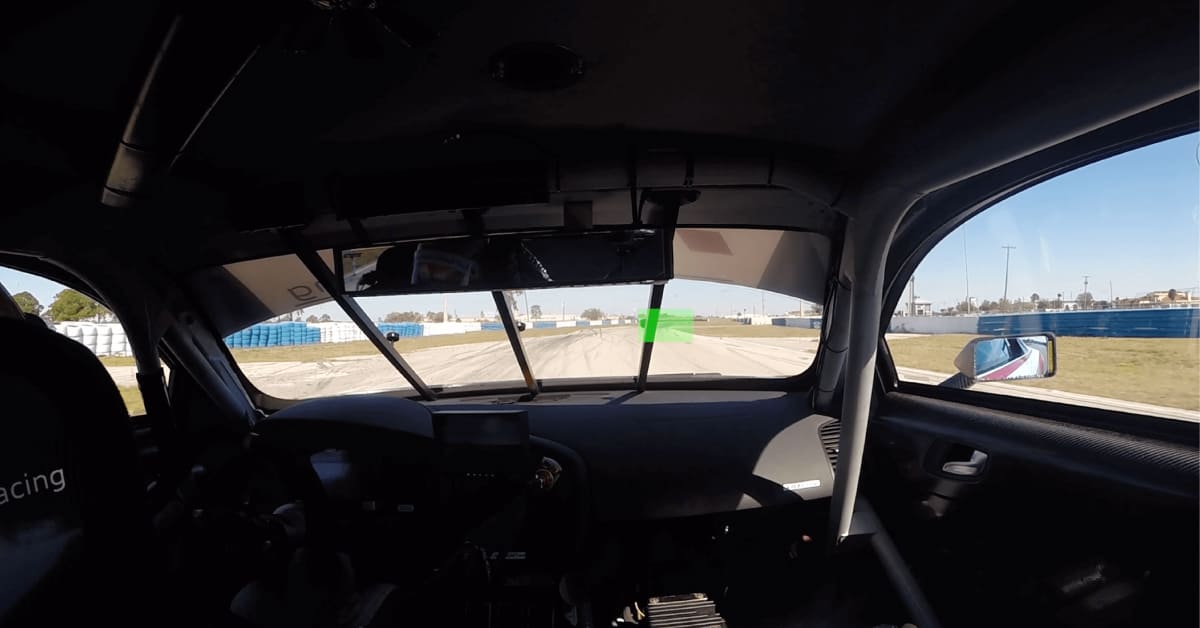
Let’s turn our attention to Turn 3 of the Sebring International Raceway. When we are racing, we want to pick out our braking marker as early as possible, so it is important to actively look for it. You can see in the photo above we are still more than 10 car lengths away from the initial brake spot and the green box highlights where our vision should be focusing. Here it is focusing in on that initial brake spot at corner entry. Brake spots are usually marked on race tracks, so it should be somewhat easy to find if you keep your eyes up.
Closing in on Initial Brake Application Spot
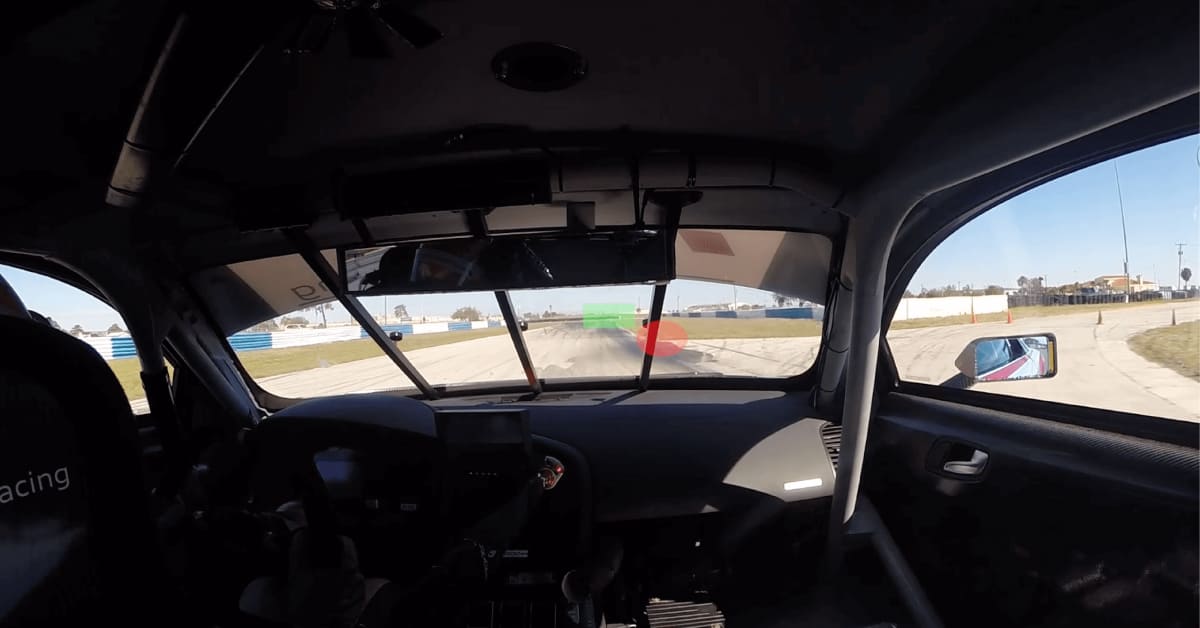
Here we see the green box (where the focus of our vision should be) is now looking further down the road. We are showing that before the driver hits the brakes they should already be focusing in on their turn in point. The red circle shows the driver’s peripheral vision. They are picking up the brake marker they were focusing on before with that peripheral vision to know where to brake.
Approaching Turn In
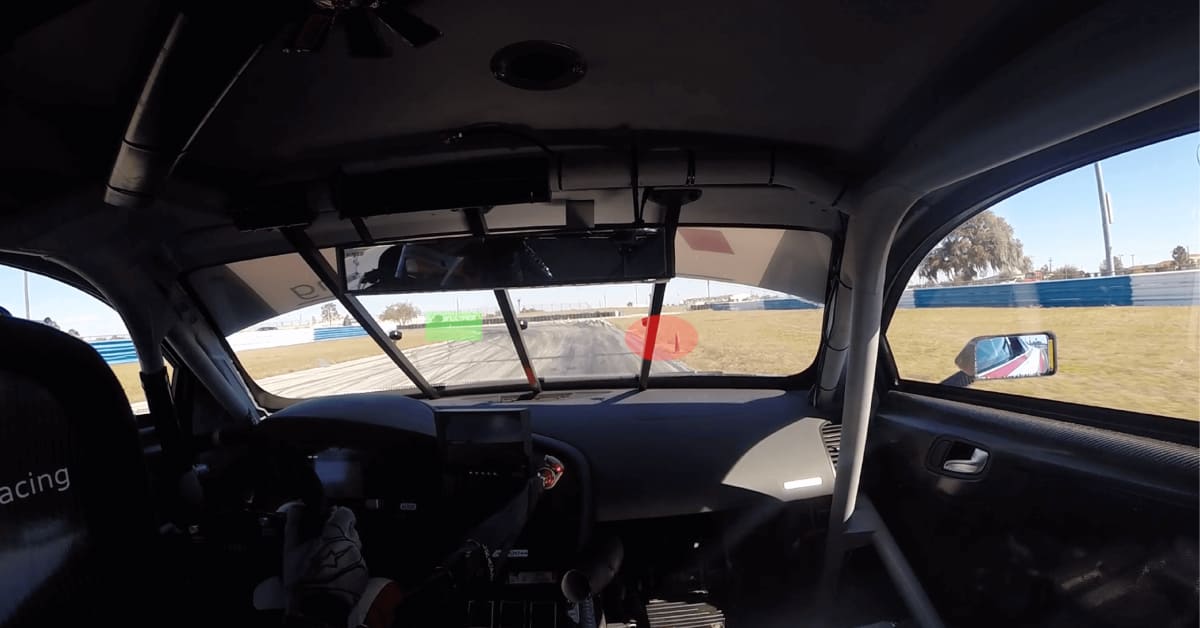
Now your eyes will shift again. As the driver is working on releasing the brakes slowly off of peak brake pressure and approaching the turn in their focal point of vision needs to shift from the turn in point down to the apex of the corner before the turn in actually happens. Once again, we are picking up the turn in point with peripheral vision.
Turn In Point
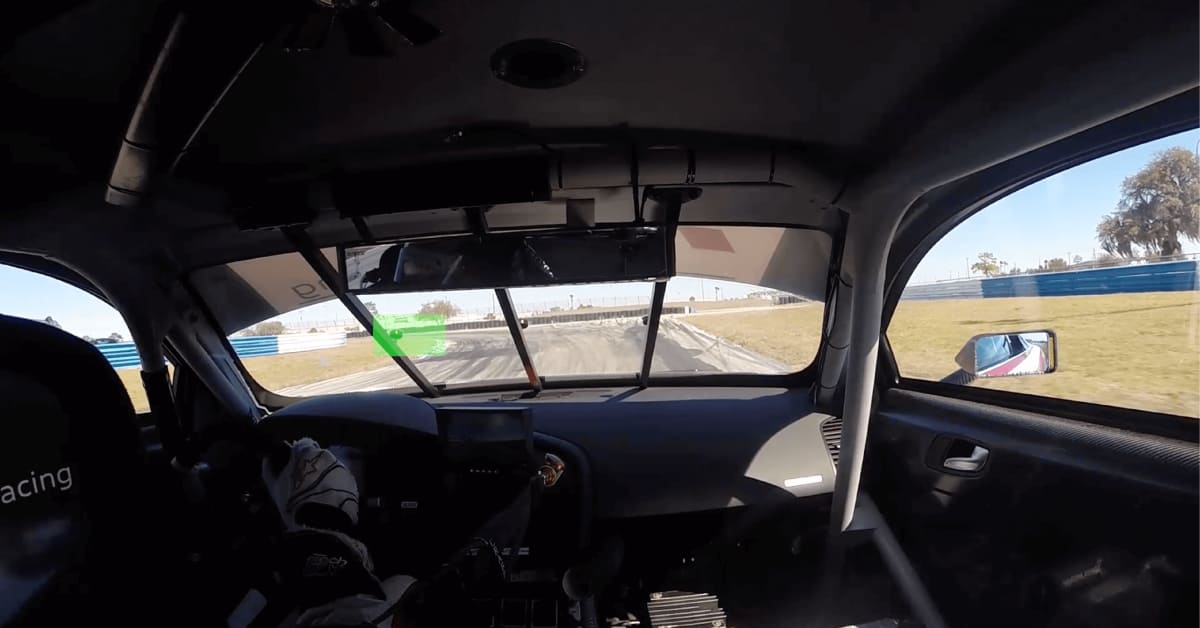
It is important to turn in at the correct point, if you are too late, you will miss the apex and too soon, you will have to correct your line mid-corner. You can see here directly after the driver turns in and starts trail braking towards the apex their vision is completely on the apex.
Learn more about trail braking HERE!
Adjust Your Vision When Approaching Apex
Not long after the turn in point and before we arrive at the apex we want to pick the focal point of our vision up and look towards the corner exit. As a driver, I want to find the exit curb as early as possible and ask myself, “How early can I start unwinding the steering wheel?” and use all of the road on corner exit to maximize the drive out of the corner.
Apex Point
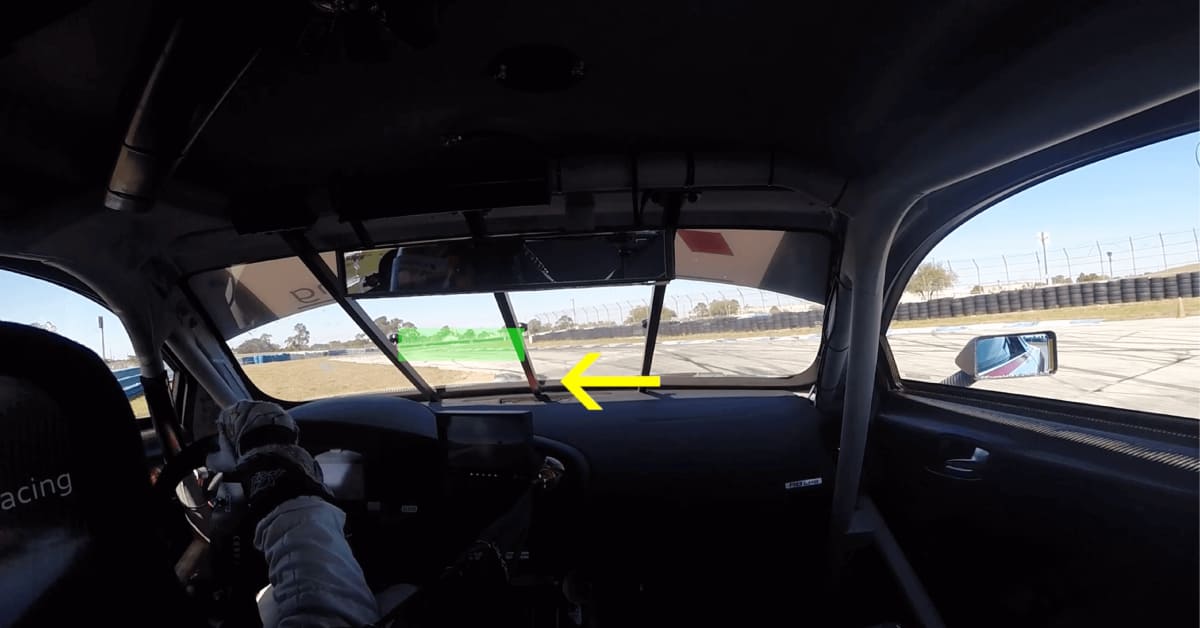
Here you can see the focal point of the driver's vision is still looking at corner exit and their peripheral vision is picking up the apex point (yellow arrow is pointing at the apex) they want to hit. Remember, the apex point is the inside part of the corner that your car will come closest to.
Want to learn more about the specifics of vision at corner exit? Read our blog HERE on keeping your eyes up at corner exit.
Vision Is Key for All Forms of Motorsport
Having solid visual skills is essential in all forms of motorsports. “During car racing, where the velocities are very high, the driver’s vision is essential to drive a powerful car safely and to detect and react in short timeframes,” writes Li in his study on race car drivers and visualization.
This break down of what it really means to have our “eyes up” will be true for any form of motorsport. If you compete in autocross this will be even more critical. The corners on autocross courses arrive much quicker with autocross so if you are not disciplined with your eyes it becomes very easy to fall behind the car!
Road racing or oval racing allows us to have more time approaching corners, through brake zones and corner exits, but the speeds are much higher so the risk of falling behind the car with our eyes is higher.
Want to practice your vision skills off the track? Read our blog HERE on Learning to Drive Like a Professional Driver!
Did you enjoy this blog but are not sure how to get started in racing? Check out tips HERE!
Learn More With Blaze!
The secret to mastering any skill is practice! Are you looking to start your racing journey? Could you use direct feedback from a professional coach on how to improve your racing and motorsport skills?
At Blayze we give you a personalized coaching session from the very best coaches in the world. For a truly unique and personalized feedback experience, submit your performance video to one of Blayze’s highly qualified coaches. The custom-developed coaching session can help you improve your on-track, so you are performing at your very best in every race. One easy click here will take you to more details on our coaching sessions.

